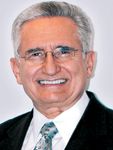Article
Leadership roles good experience for doctors
Author(s):
Short of running for political office, becoming a medical staff leader is the easiest and most effective way to make your mark. This will be especially important as hospital-based care grows in the future. Here's how to get started.

Short of running for political office at a state or national level, involvement in medical staff leadership activities is the easiest and most effective way for you to stay informed and make your voice count. Medical staff meetings-especially those such as the medical executive committee that usually involves direct participation from the hospital chief executive officer-are the nexus from which information flows and where doctors and management get together to make decisions that will regulate the physicians' hospital practices.
I know this because I've been there. During more than 30 years of ear, nose, and throat practice in Houston, Texas, I've served not only as my hospital's chief of surgery and chief of staff, but also in hospital governance as a former trustee and director of the Memorial and Memorial-Hermann Hospital systems. I also represented the hospital on a committee that created new bylaws for the health system.
Issues of medical staff organization and hospital leadership generally are not taught in residency training. And if they were, few residents or fellows would have the need to really care about them. But as you may know, that's not the case in private practice.
HOW TO GET STARTED
If your interest has been piqued by my discussion, as I hope it has, then you're already ahead in the road to becoming a medical staff leader. In my experience, most physicians will be happy to allow those who want to lead to do so. And taking charge can be very rewarding. (see "Medical Directorships: A closer look," at end of story). Here are four steps to take:





